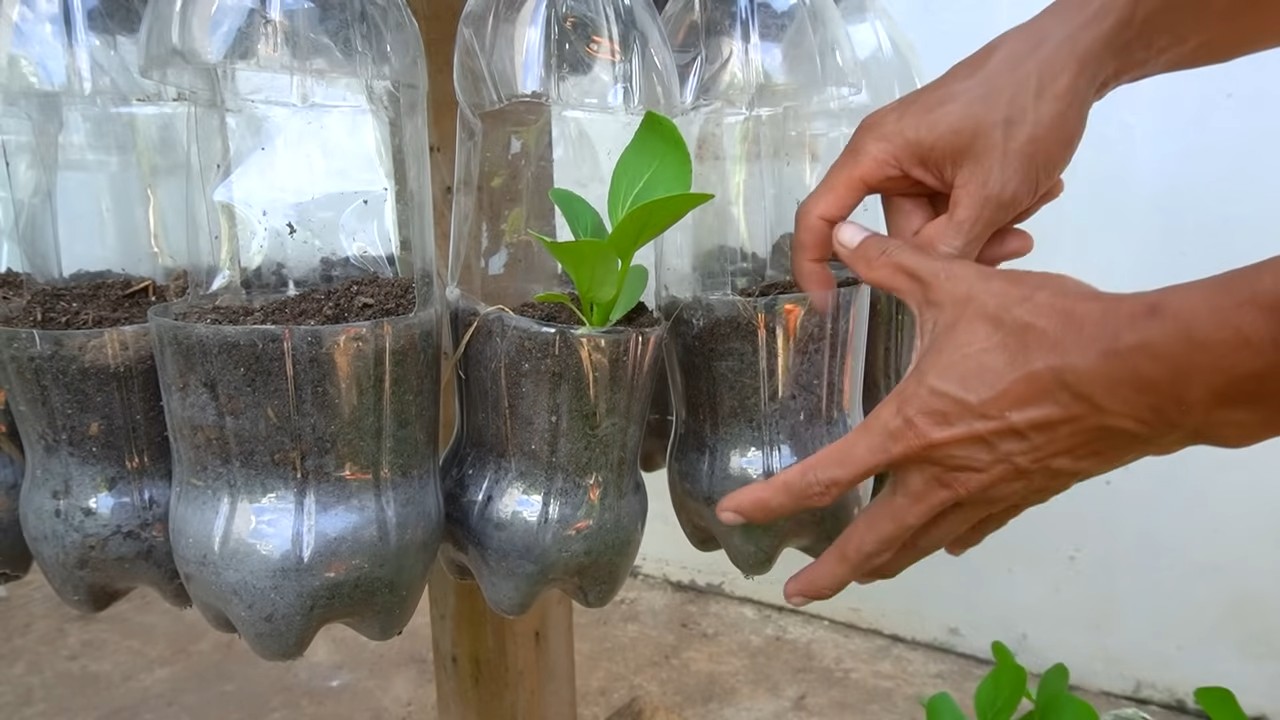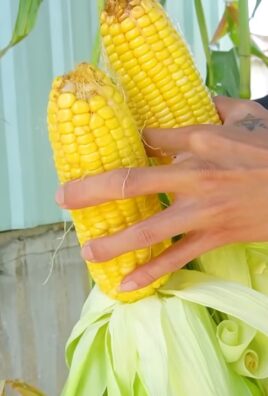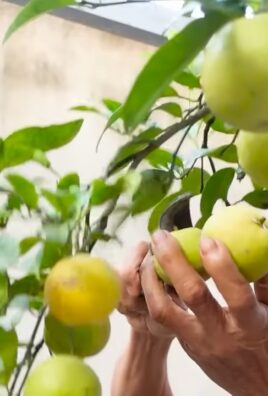Growing Choi Sum Easily is simpler than you might think, even if you don’t have a sprawling garden! Have you ever dreamt of snipping fresh, vibrant greens right from your backyard to add to your stir-fries or soups? Imagine the satisfaction of knowing exactly where your food comes from and that it’s bursting with flavor and nutrients. That’s the magic of home gardening, and Choi Sum is a fantastic place to start.
Choi Sum, also known as Chinese flowering cabbage, has been a staple in Asian cuisine for centuries. Its cultivation dates back to ancient China, where it was prized for its delicate flavor and nutritional value. Today, it’s enjoyed worldwide, and you can easily bring this culinary treasure to your own home.
But why should you bother with growing Choi Sum easily yourself? Well, store-bought vegetables can sometimes lack the freshness and flavor of homegrown produce. Plus, you have complete control over what goes into your garden, ensuring your Choi Sum is free from harmful pesticides and chemicals. This DIY guide will provide you with simple, effective tricks and hacks to cultivate a thriving Choi Sum patch, even if you’re a complete beginner. I’m excited to share these tips with you, so let’s get started and unlock the secrets to a bountiful harvest!

Grow Choi Sum Yourself with Ease: Your DIY Guide for a Bountiful Harvest
Hey garden friends! Are you in the mood for fresh, crisp vegetables straight from your own garden? Then you’ve come to the right place! Today, I’m going to show you how to easily grow Choi Sum, also known as Chinese flowering cabbage, yourself. Choi Sum is super versatile, grows quickly, and is also perfectly suited for gardening beginners. So, let’s roll up our sleeves and get started!
What You Need for Growing Choi Sum:
Before we start, here is a list of everything you’ll need:
- Choi Sum seeds: Preferably organic seeds to ensure your vegetables are free of pesticides.
- Seed starting mix: For starting seeds indoors or in a greenhouse.
- Garden soil: Well-draining and nutrient-rich for the garden bed or pot.
- Seedling pots or trays: For starting seeds.
- Watering can or spray bottle: For watering.
- Garden tools: Spade, rake, possibly a trowel.
- Fertilizer: Organic fertilizer like compost or horn shavings.
- Slug pellets (optional): If you live in an area with a lot of slugs.
- Fleece/Row cover (optional): To protect against pests and frost.
The Best Time for Sowing:
Choi Sum is a cool-weather vegetable, so the best time for sowing is in the spring (March/April) or in late summer (August/September). This way, you avoid the plants quickly bolting (going to flower) in high temperatures, which affects the harvest.
Sowing and Starting Indoors:
I personally like to start my Choi Sum plants indoors to give them a little head start. Here’s how:
- Prepare seedling containers: Fill your seedling pots or trays with seed starting mix. Lightly press the soil down.
- Sow the seeds: Place 2-3 seeds per pot or tray. The seeds should be pressed about 0.5 cm (about 0.2 inches) deep into the soil.
- Cover and water: Lightly cover the seeds with soil and gently moisten the soil with a spray bottle. The soil should be damp, but not wet.
- Place in a warm and bright spot: Put the seedling containers in a warm and bright place. A temperature of 18-20°C (64-68°F) is ideal. A mini-greenhouse or a windowsill works well.
- Maintain moisture: Make sure the soil always stays slightly moist. Spray it with water if necessary.
- Wait for germination: After about 5-10 days, the first seedlings should appear.
- Pricking out (optional): When the seedlings are large enough (have about 2-3 leaves), you can prick them out. This means you transplant the strongest plants into larger pots so they have more space to grow.
Direct Sowing Outdoors:
If you don’t have the time or desire to start seeds indoors, you can also sow Choi Sum directly into the garden bed.
- Prepare the bed: Loosen the soil in the bed well and remove weeds. Work compost or horn shavings into the soil to enrich it with nutrients.
- Make seed drills: Use a rake or a stick to make seed drills about 20-30 cm (8-12 inches) apart.
- Sow the seeds: Sow the seeds in the drills. Make sure the seeds are not too close together. A distance of about 5-10 cm (2-4 inches) between seeds is ideal.
- Cover and water: Lightly cover the seeds with soil and gently moisten the soil with a watering can.
- Maintain moisture: Make sure the soil always stays slightly moist.
- Thinning out: When the plants are large enough (have about 2-3 leaves), you should thin them out so they have enough space to grow. Leave a distance of about 20-30 cm (8-12 inches) between the plants.
Planting the Young Plants:
When your pre-grown plants are large enough (about 10-15 cm or 4-6 inches high), you can plant them in the garden bed or in pots.
- Prepare the bed: Loosen the soil in the bed well and remove weeds. Work compost or horn shavings into the soil to enrich it with nutrients.
- Dig planting holes: Dig planting holes about 20-30 cm (8-12 inches) apart. The holes should be deep enough for the plants’ root balls to fit well.
- Insert the plants: Carefully place the plants in the planting holes. Make sure the root balls are not damaged.
- Fill with soil: Fill the planting holes with soil and press the soil down lightly.
- Water: Water the plants thoroughly.
Caring for Choi Sum:
Choi Sum is relatively low-maintenance, but you should keep a few things in mind to get a bountiful harvest.
- Watering: Choi Sum needs regular water, especially in dry weather. Make sure the soil is always slightly moist. However, avoid waterlogging, as this can lead to root rot.
- Fertilizing: Fertilize your Choi Sum plants regularly with organic fertilizer like compost or horn shavings. This ensures they receive sufficient nutrients.
- Weeding: Remove weeds regularly so they don’t take nutrients away from the Choi Sum plants.
- Pest protection: Choi Sum can be infested by various pests, such as slugs, flea beetles, or cabbage white butterflies. Protect your plants with slug pellets or a fleece cover.
- Frost protection: Choi Sum is relatively frost-hardy, but during a hard frost, you should cover the plants with a fleece.
Harvest Time:
The great thing about Choi Sum is that you can harvest it after just a few weeks!
- Harvesting time: Choi Sum is ready to harvest when the stems are about 15-20 cm (6-8 inches) long and the flower buds are still closed.
- Harvesting method: Cut the stems with a sharp knife or scissors just above the ground. You can also harvest individual leaves; the plant will continue to grow, and you can harvest multiple times.
- Storage: Choi Sum does not keep for long. It is best to use it immediately after harvesting. It will keep in the refrigerator for a few days.
Choi Sum in the Kitchen:
Choi Sum is super versatile and can be prepared in many different ways.
- Raw: The young leaves can be eaten raw in salads.
- Steamed: Choi Sum can be steamed or blanched.
- Stir-fried: Choi Sum is excellent for stir-frying in a wok.
- Soups and stews: Choi Sum can be used in soups and stews.
My Personal Tips for Growing Choi Sum:
Different varieties: There are different varieties of Choi Sum. Try out different ones to find your favorite.
Sunny location: Choi Sum prefers a sunny spot, but partial shade is also possible.
Good drainage: Ensure good drainage so that water can run off well.
Regular harvesting: Regular harvesting encourages the plant’s growth.

Conclusion
So, there you have it! Growing Choi Sum easily at home is not only achievable, but also incredibly rewarding. Forget those wilted, overpriced bunches at the grocery store. Imagine stepping out into your garden or onto your balcony and harvesting fresh, crisp Choi Sum whenever you need it. The vibrant green leaves, packed with nutrients and bursting with flavor, will elevate your stir-fries, soups, and salads to a whole new level.
This DIY approach isn’t just about saving money; it’s about connecting with your food, understanding its journey from seed to plate, and enjoying the satisfaction of nurturing something from scratch. Plus, you have complete control over the growing process, ensuring that your Choi Sum is free from harmful pesticides and chemicals.
Think of the possibilities! You can experiment with different varieties of Choi Sum, from the classic green to the more exotic purple types. You can adjust the growing conditions to influence the flavor and texture of the leaves. You can even try succession planting to ensure a continuous harvest throughout the growing season.
Don’t be afraid to get your hands dirty! Start small, learn as you go, and embrace the challenges and triumphs of gardening. Even if you only have a small balcony or windowsill, you can still enjoy the benefits of growing your own Choi Sum.
We’ve provided you with a solid foundation, but the real magic happens when you personalize the process. Try different soil mixes, experiment with different watering schedules, and observe how your plants respond. The more you engage with your Choi Sum, the more successful you’ll be.
And remember, gardening is a journey, not a destination. There will be setbacks along the way, but don’t let them discourage you. Learn from your mistakes, adapt your approach, and keep growing.
We are confident that with a little effort and patience, you’ll be enjoying delicious, homegrown Choi Sum in no time. So, grab your seeds, prepare your soil, and get ready to embark on this exciting culinary adventure.
We encourage you to try this DIY trick and share your experiences with us. Let us know what worked for you, what challenges you faced, and any tips or tricks you discovered along the way. Your feedback will not only help us improve this guide but also inspire other gardeners to try growing their own Choi Sum. Share your photos and stories in the comments below – we can’t wait to see what you create!
Frequently Asked Questions (FAQ)
What is Choi Sum and why should I grow it?
Choi Sum, also known as Choy Sum or Chinese Flowering Cabbage, is a leafy green vegetable popular in Asian cuisine. It’s incredibly versatile, delicious in stir-fries, soups, steamed dishes, and even salads. Growing your own Choi Sum ensures you have access to fresh, pesticide-free greens, saves money, and provides a rewarding gardening experience. Plus, homegrown Choi Sum often tastes better than store-bought varieties!
How long does it take to grow Choi Sum?
One of the great things about Choi Sum is its relatively short growing season. From seed to harvest, it typically takes just 4-6 weeks. This makes it an ideal crop for beginner gardeners and those looking for quick results.
What are the best growing conditions for Choi Sum?
Choi Sum thrives in cool weather, making it a great crop for spring and fall. It prefers temperatures between 50°F and 70°F (10°C and 21°C). It needs at least 4-6 hours of sunlight per day, but can tolerate partial shade, especially in hotter climates. Well-draining soil rich in organic matter is essential.
Can I grow Choi Sum in containers?
Absolutely! Choi Sum is well-suited for container gardening. Choose a pot that is at least 6-8 inches deep and wide to allow the roots to develop properly. Use a high-quality potting mix and ensure the container has drainage holes. Container-grown Choi Sum may require more frequent watering than those grown in the ground.
How often should I water my Choi Sum plants?
Choi Sum needs consistent moisture to thrive. Water deeply whenever the top inch of soil feels dry to the touch. Avoid overwatering, as this can lead to root rot. Mulching around the plants can help retain moisture and suppress weeds.
What kind of fertilizer should I use for Choi Sum?
Choi Sum is a heavy feeder, so it benefits from regular fertilization. Use a balanced fertilizer (e.g., 10-10-10) or a fertilizer specifically formulated for leafy greens. Apply the fertilizer according to the package instructions. You can also amend the soil with compost or other organic matter to provide a slow-release source of nutrients.
Are there any pests or diseases that affect Choi Sum?
Like other brassicas, Choi Sum can be susceptible to pests such as aphids, cabbage worms, and flea beetles. Regularly inspect your plants for signs of infestation and take appropriate action. Organic pest control methods, such as insecticidal soap or neem oil, can be effective. Diseases such as downy mildew and clubroot can also affect Choi Sum. Ensure good air circulation and avoid overwatering to prevent these diseases. Crop rotation can also help reduce the risk of soilborne diseases.
When is the best time to harvest Choi Sum?
Harvest Choi Sum when the flower stalks begin to emerge but before the flowers open. This is when the leaves and stems are at their most tender and flavorful. You can harvest the entire plant at once or harvest individual leaves as needed.
Can I eat the flowers of Choi Sum?
Yes, the flowers of Choi Sum are edible and have a slightly sweet, peppery flavor. They can be used as a garnish or added to salads and stir-fries.
What are some variations I can try when growing Choi Sum?
Experiment with different varieties of Choi Sum, such as ‘Mei Qing Choi’ (a dwarf variety) or ‘Purple Choi Sum’ (which has purple leaves and stems). You can also try growing Choi Sum in different growing mediums, such as hydroponics or aquaponics. Another variation is to try succession planting, sowing new seeds every few weeks to ensure a continuous harvest throughout the growing season.
How do I prevent bolting (premature flowering) in Choi Sum?
Bolting is a common problem with Choi Sum, especially in hot weather. To prevent bolting, choose bolt-resistant varieties, provide shade during the hottest part of the day, and ensure consistent watering. Harvesting regularly can also help prevent bolting.
Where can I buy Choi Sum seeds?
Choi Sum seeds are readily available online and at most garden centers. Look for reputable seed suppliers that offer high-quality seeds.
What if my Choi Sum leaves are turning yellow?
Yellowing leaves can indicate several problems, including nutrient deficiencies, overwatering, or pest infestations. Check the soil moisture and drainage, fertilize if necessary, and inspect the plants for pests.
Is growing Choi Sum easily organic?
Yes, growing Choi Sum easily can be completely organic. Use organic soil amendments, fertilizers, and pest control methods to ensure that your Choi Sum is free from synthetic chemicals.





Leave a Comment